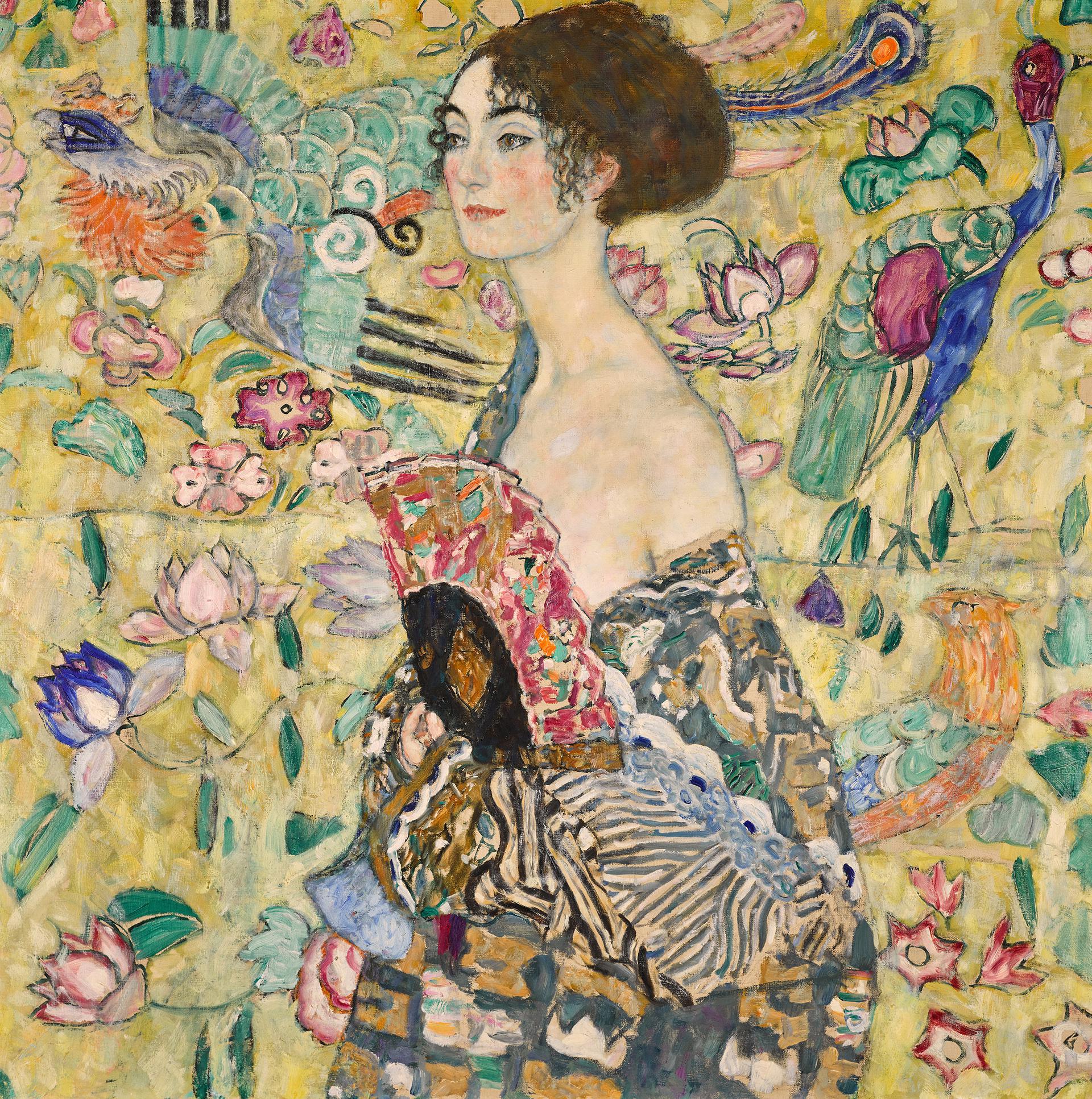 Klimt file, with 108.4 million is the most costly masterpiece ever bought in Europe –
[ad_1]
Klimt file, with 108.4 million is the most costly masterpiece ever bought in Europe –
[ad_1]
In its first look available on the market in virtually thirty years, Gustav Klimt’s (1862-1918) newest masterpiece, ‘Woman with a Fan’ (Dame mit Fächer), exceeded expectations at Sotheby’s in London this night, the place it bought for £85.3 million ($108.4 million; €99.2 million), setting a brand new public sale file for the Austrian painter and turning into essentially the most precious murals ever auctioned in Europe. The end result can be the second-highest value for a portrait – from any period – ever bought at public sale.
After a ten-minute battle between 4 bidders, three of whom have been within the London room, Klimt’s newest portrait was finally bought to Patti Wong (Founding father of Patti Wong & Associates), who bid within the room on behalf of a Hong Kong collector.
The worth hit tonight eclipses the $104.3 million (£65 million) feat for Alberto Giacometti’s ‘L’homme qui marche I (Strolling Man I)’, which bought at Sotheby’s London in 2010. The public sale file for Klimt was outbid (it was $104.6 million up to now for the Paul G. Allen Assortment’s “Birch Forest,” bought final yr in New York). “Dame mit Fächer” was final provided on the market virtually thirty years in the past at Sotheby’s in New York, in 1994, when it was purchased for $11.6 million (£7.8 million), setting a brand new public sale file for the artist on the time. This night the opera has regained this standing.
When Gustav Klimt died unexpectedly one February day in 1918, the portray was nonetheless on the easel in his studio. “Woman with a Fan” can be thought-about certainly one of Klimt’s best works, created when he was nonetheless in his prime and at a time when the “formality” of his earlier commissioned works gave option to a brand new expressiveness – an ever deeper and extra joyful immersion in drawing, shade and type, which – whereas clearly influenced by his contemporaries Van Gogh, Matisse and Gauguin – turns into one thing utterly completely different within the fingers of the Austrian painter.
Equally, whereas the marginally earlier works of Klimt’s well-known “golden age”, headed by the long-lasting 1907 portrait of Adele Bloch-Bauer I, see the protagonist offered as an icon, within the midst to a tapestry of golden shapes, on this case the determine virtually dissolves into the background, whereas the mushy texture of the girl’s pores and skin repeats itself in opposition to the pale yellow background.
The portray was acquired shortly after Klimt’s demise by the Viennese industrialist Erwin Böhler. The Böhler household, which included Erwin’s brother Heinrich and cousin Hans, have been mates and patrons of Klimt and Egon Schiele. The work later handed to Heinrich after which, upon his demise in 1940, to Heinrich’s spouse Mabel. As of 1967 the portray was within the assortment of Rudolf Leopold, who is understood to have bought a big group of Schiele drawings from Mabel Böhler in 1952 and should have bought this work from her as properly. In 1994 it was auctioned off and purchased by the proprietor’s household, who requested Sotheby’s to promote the masterpiece a couple of weeks later.
Klimt started engaged on the “Woman with a fan” in 1917, by which period he was one of the well-known portrait painters in Europe: the commissions adopted each other at a speedy tempo and the artist was capable of fetch costs far greater than these of his contemporaries. However this can be a uncommon work painted fully to pursue his personal pursuits. Stuffed with freedom and spontaneity, it displays Klimt’s pleasure in portray and celebrating magnificence in its purest type. It additionally reveals the progressive strategy of him.
Klimt additionally offers full expression to his full fascination with Chinese language and Japanese artwork and tradition. In “Dame mit Fächer”, Klimt attracts primarily on Chinese language motifs: the phoenix (image of immortality and rebirth, luck and constancy) and lotus flowers (symbols of affection, pleased marriage and/or purity). Moreover, the flattening of the background and the juxtaposition of patterns replicate his deep curiosity in Japanese woodblock prints.
[ad_2]




0 comments